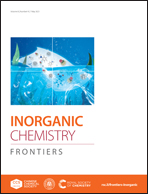Ion-biosorption induced core–shell Fe2P@carbon nanoparticles decorated on N, P co-doped carbon materials for the oxygen evolution reaction†
Abstract
Owing to the sluggish kinetics of the oxygen evolution reaction (OER), transition metal phosphides (TMPs) as comprehensive OER catalysts have been attracting increasing attention. Unlike traditional preparation methods, this work induces a cost-effective biosorption strategy employing bacteria as precursors to obtain Fe2P@carbon nanoparticles decorated on N and P co-doped carbon (Fe2P@CNPs/NPC) materials, which fully employs the self-screening and self-healing abilities of membranes as well as the easy-controllable cultivation of bacteria. Moreover, copper ions are innovatively selected for catalyzing ferric ion soaking in bacteria for the first time. The obtained hierarchical Fe2P@CNPs/NPC show union of porous structures guaranteeing ion infusions: P and N element doped carbon nanomaterials improve the wettability and conductivity, and Fe2P crystals enhance the active sites, delivering current densities of 10, 50 and 100 mA cm−2 at overpotentials of 266, 301 and 313 mV in 1.0 M KOH electrolytes, respectively, and robust stabilities without a decrease in the long-term j–t operations for 15 h for the OER. Thus, this work not only offers an efficient, green and largescale fabrication method to construct an OER catalyst, but also lays the foundation for the deep research of ferric phosphides in the electrochemical fields.



 Please wait while we load your content...
Please wait while we load your content...